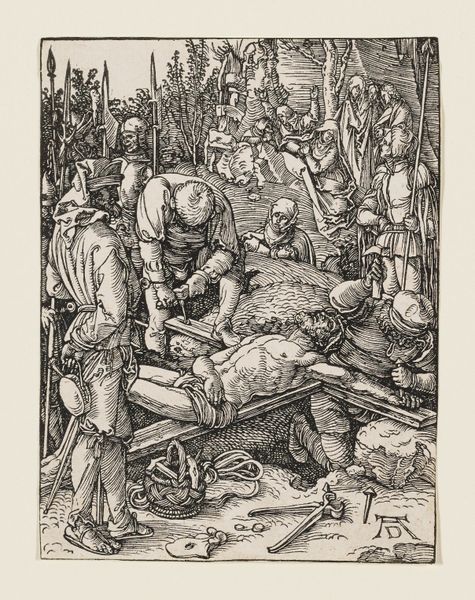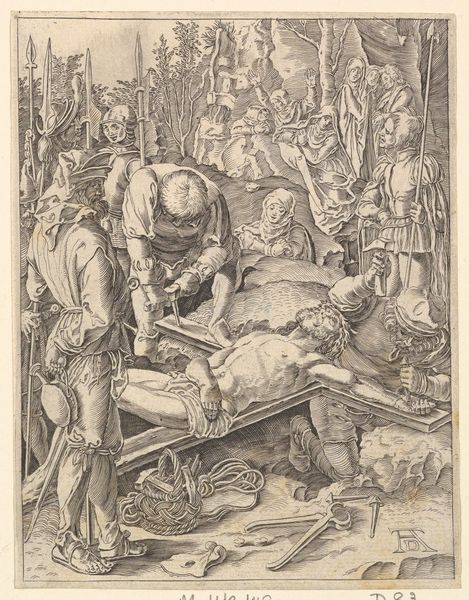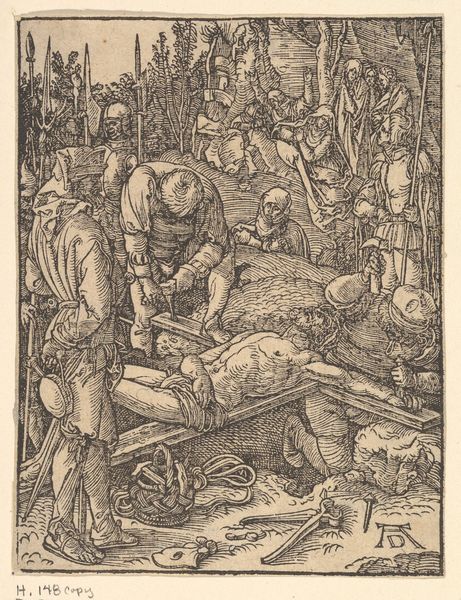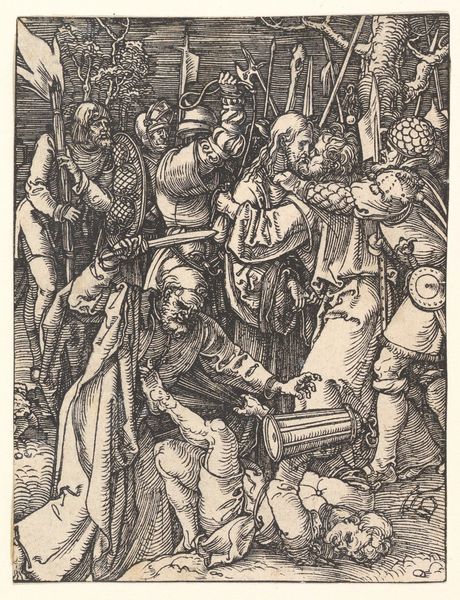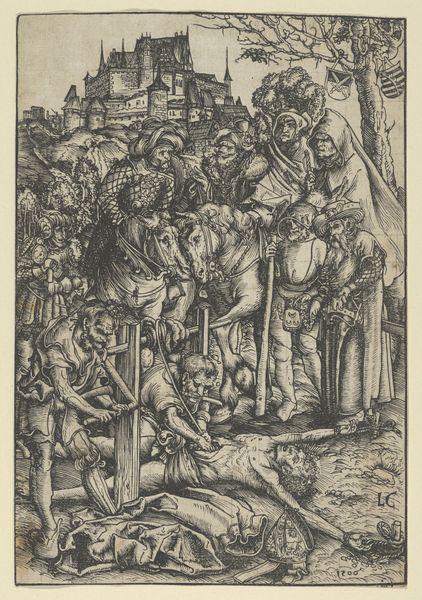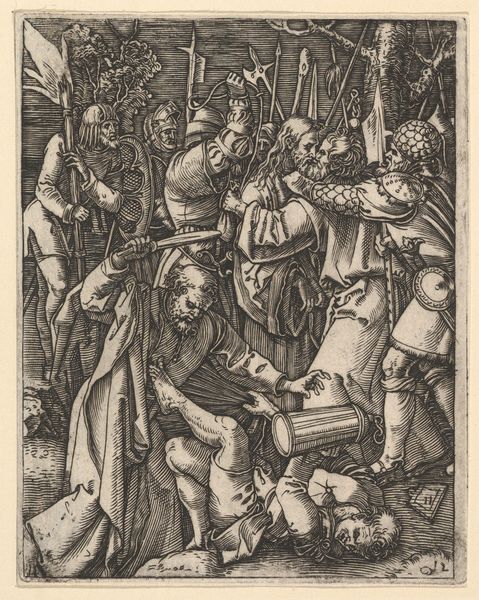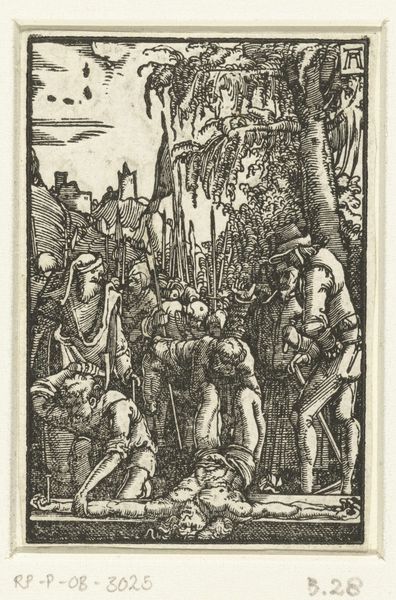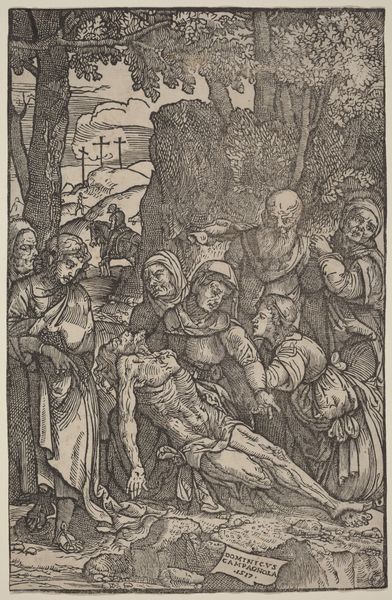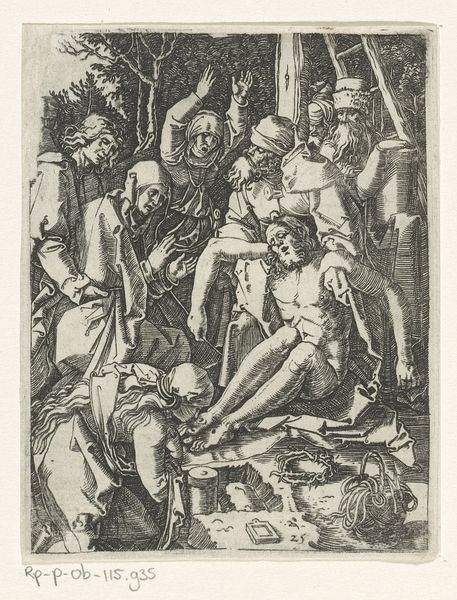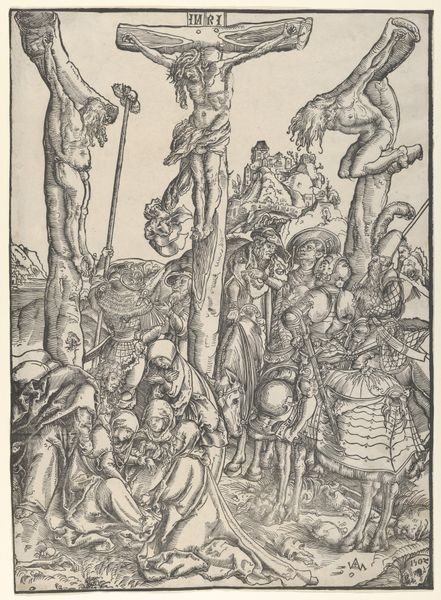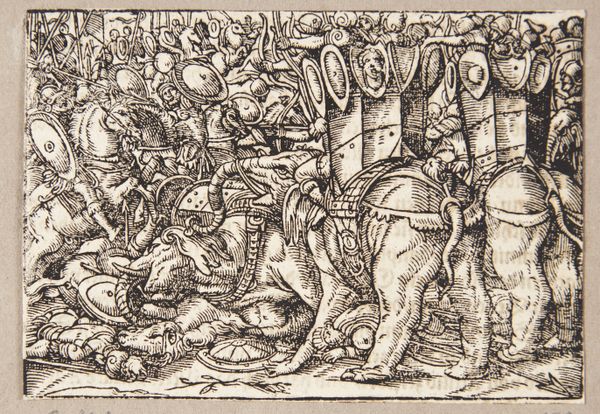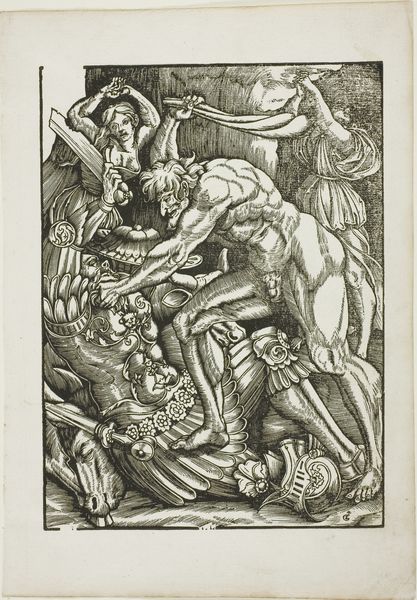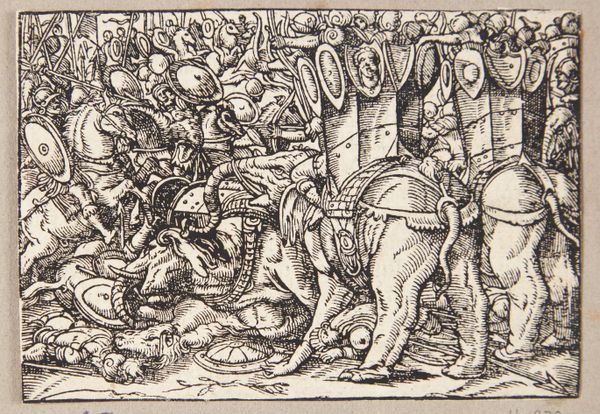
drawing, print, intaglio, ink, engraving
#
drawing
#
narrative-art
# print
#
pen illustration
#
pen sketch
#
intaglio
#
figuration
#
11_renaissance
#
ink
#
history-painting
#
northern-renaissance
#
engraving
Dimensions: height 131 mm, width 99 mm
Copyright: Rijks Museum: Open Domain
Curator: Today we're looking at "The Raising of the Cross," an engraving by Marcantonio Raimondi, created sometime between 1511 and 1534. It’s part of the Rijksmuseum collection. Editor: It’s a stark image, full of tension. The density of the figures crammed into the composition, the textures achieved with such fine lines—it almost overwhelms. Curator: Raimondi's technical skill is undeniable. Look at how he uses line variation to create depth and shadow. Notice how he captures the anatomical details, reflecting his study of classical forms and artistic theory, an intellectual and creative feat, in my estimation. Editor: Yes, but consider the narrative Raimondi's chosen to depict—the raising of Christ on the cross. The raw brutality contrasts with the idealized forms, creating a deeply unsettling tension. Think about the power dynamics, the spectacle of violence, the subjugation of one group by another— Curator: Surely, the historical context cannot be divorced from aesthetic and structural consideration. His figures demonstrate his training, his deliberate placement and use of line and shadow guide the eye. Consider the composition overall, its complex arrangement and internal logic-- Editor: But these events were not just formally interesting arrangements; they carried profound social, religious, and political weight, and impacted how our Western societies were structured. We see, for example, rigid socio-economic hierarchies rendered plain through depictions of physical labour and tools, which would have carried immediate significance. Curator: Of course, but the image stands as a testament to the graphic language of the era and the technical mastery required for its execution. These are intellectual exercises in formal structures which themselves express deeper meanings, to be sure. Editor: Which circles back to how Raimondi grapples with conveying pain and power. I keep returning to those instruments of torture on the lower right. They weren't just objects. They are emblems of subjugation. Curator: They serve as part of the historical tableau, expertly rendered with line, tonality and verisimilitude-- a mastery. Editor: Agreed, though this tableau holds up a mirror, forcing us to look not only at Raimondi’s mastery, but at the undercurrents of societal control represented in his artistry. Curator: Indeed. The artist has rendered an exemplary depiction, while prompting introspection and reflection.
Comments
No comments
Be the first to comment and join the conversation on the ultimate creative platform.
